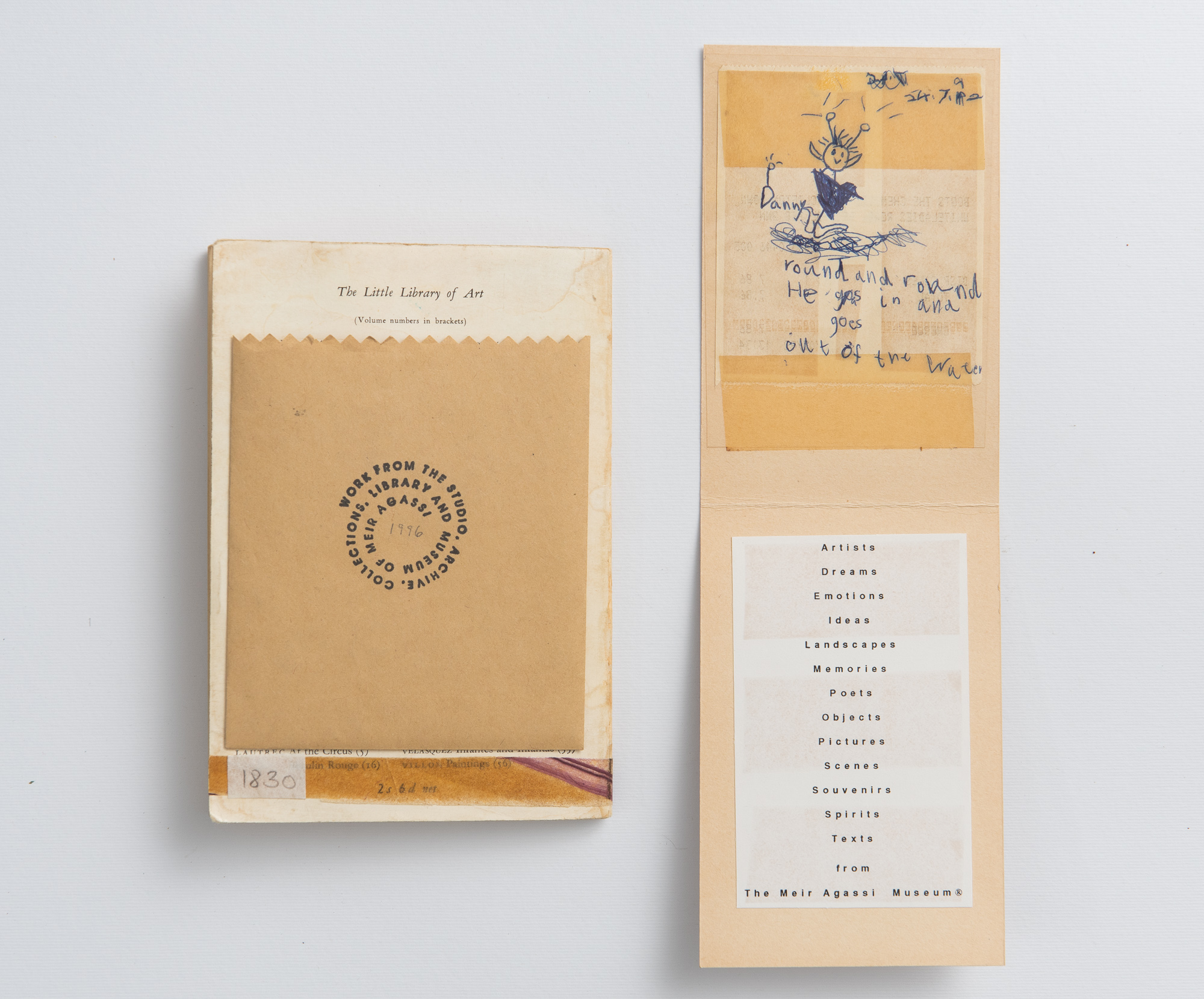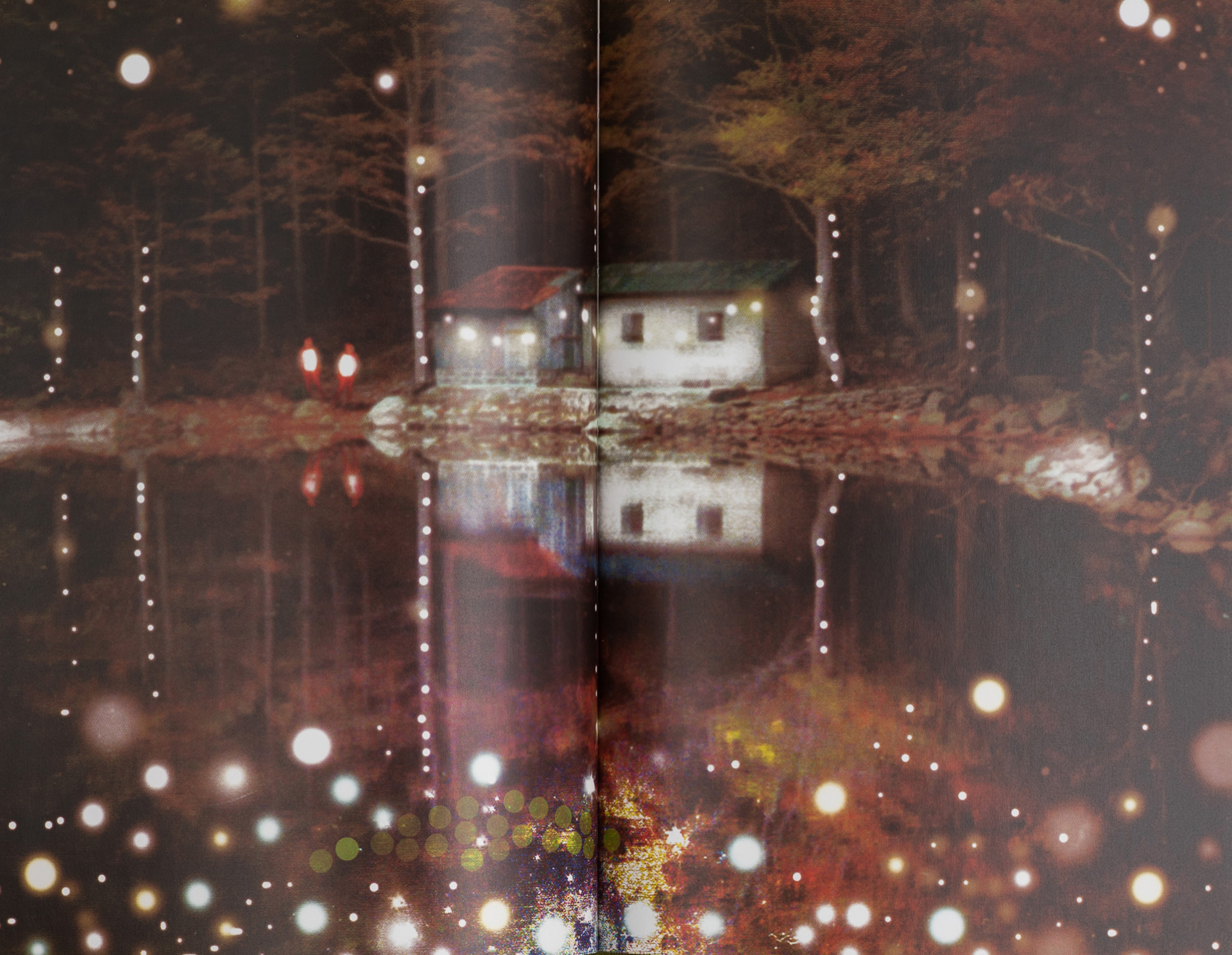How did your book come into the world?
From having gathered a lot of raw materials, and the need to find a way to process them so that they translate into a concrete, corporeal experience.
What was it like creating with partners?
For me, it was really great, because Ran Ben Ezra (the designer of my book) already had experience dealing with this kind of process, which made things a lot easier. Initially, he asked me to place all of my images in a binder, and then we spread them out on the floor in my house. We intuitively selected images we thought worked well together, which of them required framing and which didn’t.
Next, we started looking for connections, which images were repetitive, and which pictures we didn’t necessarily have to include. After we constructed that first sequence of photographs, we printed them and leafed through them in order to see what wasn’t working. Every time we printed out a mockup, it became clearer how the final product should look. Ran provided me with a broader perspective into my body of work and what should be highlighted and what was important.
What is the process that this book embodies?
The decision to create this book was quite carefree. I usually think things over a hundred times before I actually let my work see the light of day. I was thinking of this artist-book more in terms of a tourist book or as a collection of postcards and didn’t even bother myself with the question of whether it corresponded with the rest of my works that grapple with themes such as masculinity, gender, and identity.
The bottom line is that I had spent time in Naples, Italy, and this book binds together the feelings that the city and my encounters with people there had evoked in me. Isn’t that how most of us, photographers, start taking pictures?
What would you like people to feel when leafing through this book?
There’s a genre in film commonly referred to as “feel-good movies.” I don’t know if the same genre exists in the category of artist books, but that’s what I’d like this book to be for others—a feel-good book.
The title of a book is like a secret. Will you let us in on it?
When I was 10 years old, I took a trip with my family to France. The most lucid memory I have from that trip is when we opened the window of our hotel room one night at 10 P.M., and when I gazed outside the sky was still bright. Since that moment, I find myself moved by the lingering light of the long summer days. I feel acutely alive on such days. I had the same experience when I traveled to Sicily. In its essence, I feel that this book embodies that same deep sensation of being alive.
What do you think you achieved with this book?
That I was able to create it with a laidback feeling of: “Why not?”
Did you experience any disappointment or difficulty along the way?
It’s hard to get funding for books of this sort, and I didn’t receive any funding all along the way. Since I didn’t start this process thinking that I was going to create a book, I can say in retrospect that there were some elements that were missing from my process, which could have made the editing stage more flexible.
Could you share with us why you decided not to include any texts in this book?
This is something Ran and I discussed. It was clear to both of us that the book wouldn’t contain any texts. From the very get-go, our intention was simply to show off the footage and to take people on a refreshing summer journey. We felt that adding texts would be artificial because those would turn the book into something more contrived than it was. Sometimes we layer things with too much information to make them seem more grandiose, and to me, it felt nonsensical to do so.
In what kind of other formats (if any) could you present the body of work you are showcasing through this book?
Some of the photographs were enlarged, printed, and framed, and they also created a new narrative when they were separated and placed together again. I can imagine another part of this body of work presented in a magazine or simply existing online in some digital format.
How long does it take to create a book?
It took me five months.
Is there something important you discovered about the process of bookmaking that you believe everyone else should also know about?
That it’s very good to practice looking at something for a long time and contemplate it, leave it and look at it again, put it aside, and then observe it once more with fresh eyes. Working with images in a concrete way brings us closer to the essence of our photographs. It’s also important to mention that this shouldn’t be some intangible or sublime mission, you can just create a book. You can create as many books as you want. It’s fun!
Who is your ideal reader?
Anyone who would like to leaf through it.
Who would you have liked to dedicate this book to?
There’s a sentence at the beginning of the book: “This week will be radiant in every way.” This isn’t a formal dedication, it’s a sentence from a fortune cookie I had opened while in Naples. I see it as a kind of dedication or blessing directed at anyone who might leaf through the book.
Which artist books have inspired you the most? (Perhaps the first one you had ever acquired, or your personal favorite)
The first artist book I ever bought was Day & Night by Israeli artist Uri Gershuni. I have since purchased artists’ books by David Adika, Wilhelm von Gloeden, Walter Pfeiffer, and Tamir Lahav-Radlmesser, all of which I deeply love.
What book should we add next to our library?
You should check out the work of Roni Doron. She is an illustrator, and she has a lot of interesting things to say about her work.
Where can readers get a copy of your book?
They can place a personal order on my website.
Asaf Einy was born in 1987 in Kibbutz Sde Boker; he currently lives and works in Tel Aviv-Yafo. Einy holds a BFA from the Bezalel Academy of Arts and Design’s Fine Arts department. In his works, Einy casts his gaze on male models at the social and political fringes of society. His photographs, created in the charged meeting point between the documentary, directed, and commercial junctures of photography, seek to examine the ways in which bodies are reshaped by social and political environments, and vice versa. For Einy, the very act of photography is a possibility of intimacy, which mostly remains unfulfilled.




"There’s a sentence at the beginning of the book: “This week will be radiant in every way.” This isn’t a formal dedication, it’s a sentence from a fortune cookie I had opened while in Naples. I see it as a kind of dedication or blessing directed at anyone who might leaf through the book."












